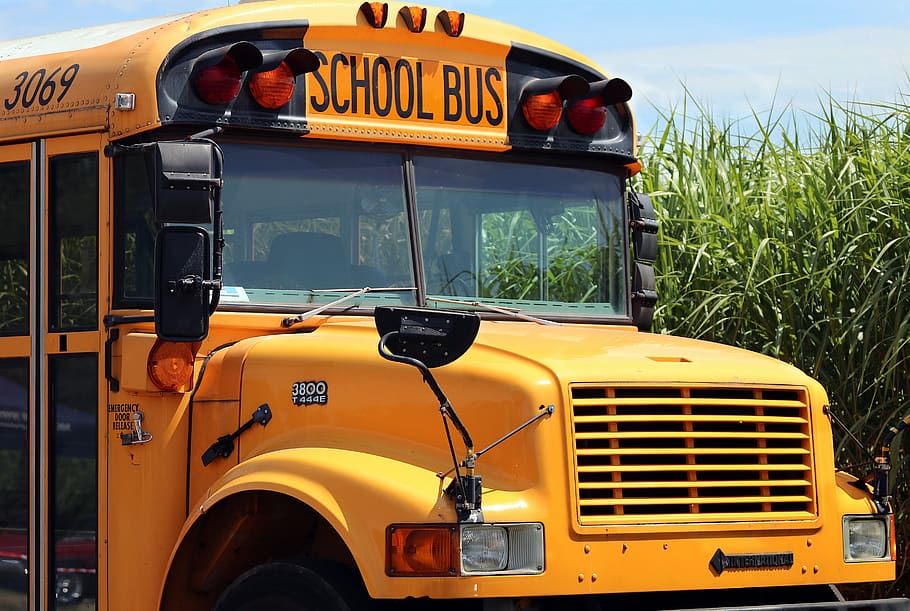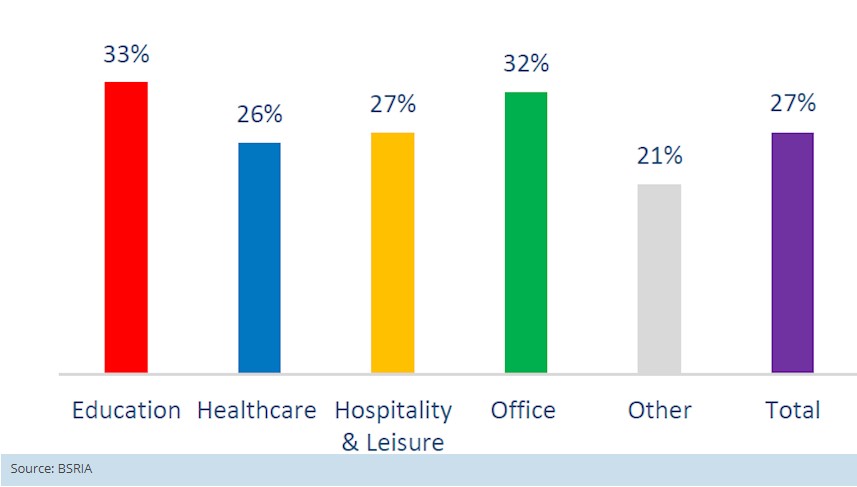School reopening and indoor air quality in North America
In September 2021, the pandemic continued to place indoor air quality (IAQ) at the forefront in commercial and public buildings. During this post-Labor Day period for the US and Canada, nowhere was this more evident than in schools. Indeed, for many districts and individual schools, the new year coincided with a return to full or nearly full physical attendance.
In New York City’s public school district alone, the largest in the US, 13 September 2021 marked the return to the classroom for one million students. While most likely enjoy the moment, parents and children alike have been left wondering about the sense of normality in the next few months, as we move towards winter and the threat of a surge in COVID-19 cases.
The HVAC industry is doing its fair share for a safe return to the classroom by providing abatement technologies, monitoring and engineering controls to optimise air quality against COVID-19, most often as part of a layered strategy. It has also been well documented that the benefits of IAQ are broad ranging and will be long lasting beyond the 2020/2021 pandemic, from preventing other microbial infections, VOC-linked irritations as well as asthma - and even leading to better academic achievements.
BSRIA released detailed insight on IAQ markets in May 2021 in its 'Opportunities in the Commercial Indoor Air Quality Market' report with original research into this changing environment. The research was piloted in North America, and BSRIA looks to extend the scope to Europe and include key residential applications.
The report cross referenced key commercial verticals like schools with the main IAQ technology segments (ventilation, filtering, air purification and controls). It also included market forecasts to 2025 with drivers and hurdles, as well as insight on regulations and standards and the state of adoption of relevant technologies.
The market’s strong dynamics is quantified, and we do see the largest increases in demand for IAQ in the education sector (K-12 + higher education in our figure), though growth rates differ significantly across the IAQ technology segments.
|
CAGR in value for IAQ technologies (excluding ventilation) by vertical market between 2020 and 2025 in the baseline scenario. |
The need and appetite for improved IAQ come in the middle of a recognised, more general gap in HVAC capital upgrades and maintenance in K-12 schools. This was surveyed before COVID-19 by a Government Accountability Office (GAO) June 2020 report highlighting that “an estimated 41% of public school districts need to update or replace HVAC systems in at least half of their schools, representing about 36,000 schools nationwide”, while the assessment of needs and priorities was often left to overburdened school districts.
However, things have been moving immensely on the public funding side with the urgency recognised in the pandemic (essentially the three-tier ESSER fund for K-12 public and some charter schools). State initiatives are starting to cascade to targeted funding on HVAC/ventilation/IAQ for schools.
Virginia was a case in point in August 2021 with an approved bill to appropriate $250M in FY2022 to qualifying ventilation improvement projects in public schools, with funds to be allocated to local school divisions (with a local match required). Other state initiatives in CA, VT, etc already incentivise ventilation projects specifically through grants. It is to be expected that schools and districts will need guidance as to how best to use these funds before the 2025 sunset clause.
As noted in the BSRIA report on the emphasis on legislation and standards, the effort on specifications will continue as is evident with ASHRAE’s efforts with its Epidemic Task Force (ETF) and its joint work with CDC and will feed into the various building codes for each sector. Regulations will thus continue to evolve over the next five years, supporting market growth - especially in education.
IAQ efforts often start with monitoring and simple remediation measures when possible, for instance with portable appliances or simple add-ons. It then can lead to control and command tools that will deliver and perhaps guarantee IAQ levels.
While this trend is nascent, at least for smaller buildings, it is expected to continue and will be key to strike in each case the right balance between IAQ and energy efficiency. As for integration, connectivity, analytics, some large players have their solutions, others partner with innovative start-ups in the IAQ controls space. However, there is no doubt that sensors and controls will play an increasing role in commercial and public buildings to monitor and control the IAQ and ensure it is safe for the occupants whilst also maximising the energy efficiency of a building.
If you would like further information on BSRIA’s report on IAQ in the US or Europe (or any of the other reports from the organisation's portfolio of publications, please contact BSRIA Worldwide Market Intelligence on:
- BSRIA UK (Europe): wmi@bsria.co.uk; +44 (0) 1344 465 540.
- BSRIA USA (Americas): sales@bsria.com; +1 312 753 6803.
- BSRIA China (China): [email protected]; +86 10 6465 7707.
This article originally appeared on the BSRIA website. It was published in September 2021.
--BSRIA
[edit] Related articles
Featured articles and news
Ebenezer Howard: inventor of the garden city. Book review.
The Grenfell Tower fire, eight years on
A time to pause and reflect as Dubai tower block fire reported just before anniversary.
Airtightness Topic Guide BSRIA TG 27/2025
Explaining the basics of airtightness, what it is, why it's important, when it's required and how it's carried out.
Construction contract awards hit lowest point of 2025
Plummeting for second consecutive month, intensifying concerns for housing and infrastructure goals.
Understanding Mental Health in the Built Environment 2025
Examining the state of mental health in construction, shedding light on levels of stress, anxiety and depression.
The benefits of engaging with insulation manufacturers
When considering ground floor constructions.
Lighting Industry endorses Blueprint for Electrification
The Lighting Industry Association fully supports the ECA Blueprint as a timely, urgent call to action.
BSRIA Sentinel Clerk of Works Training Case Study
Strengthening expertise to enhance service delivery with integrated cutting-edge industry knowledge.
Impact report from the Supply Chain Sustainability School
Free sustainability skills, training and support delivered to thousands of UK companies to help cut carbon.
The Building Safety Forum at the Installershow 2025
With speakers confirmed for 24 June as part of Building Safety Week.
The UK’s largest air pollution campaign.
Future Homes Standard, now includes solar, but what else?
Will the new standard, due to in the Autumn, go far enough in terms of performance ?
BSRIA Briefing: Cleaner Air, Better tomorrow
A look back at issues relating to inside and outside air quality, discussed during the BSRIA briefing in 2023.
Restoring Abbotsford's hothouse
Bringing the writer Walter Scott's garden to life.
Reflections on the spending review with CIAT.
Retired firefighter cycles world to raise Grenfell funds
Leaving on 14 June 2025 Stephen will raise money for youth and schools through the Grenfell Foundation.
Key points for construction at a glance with industry reactions.

























